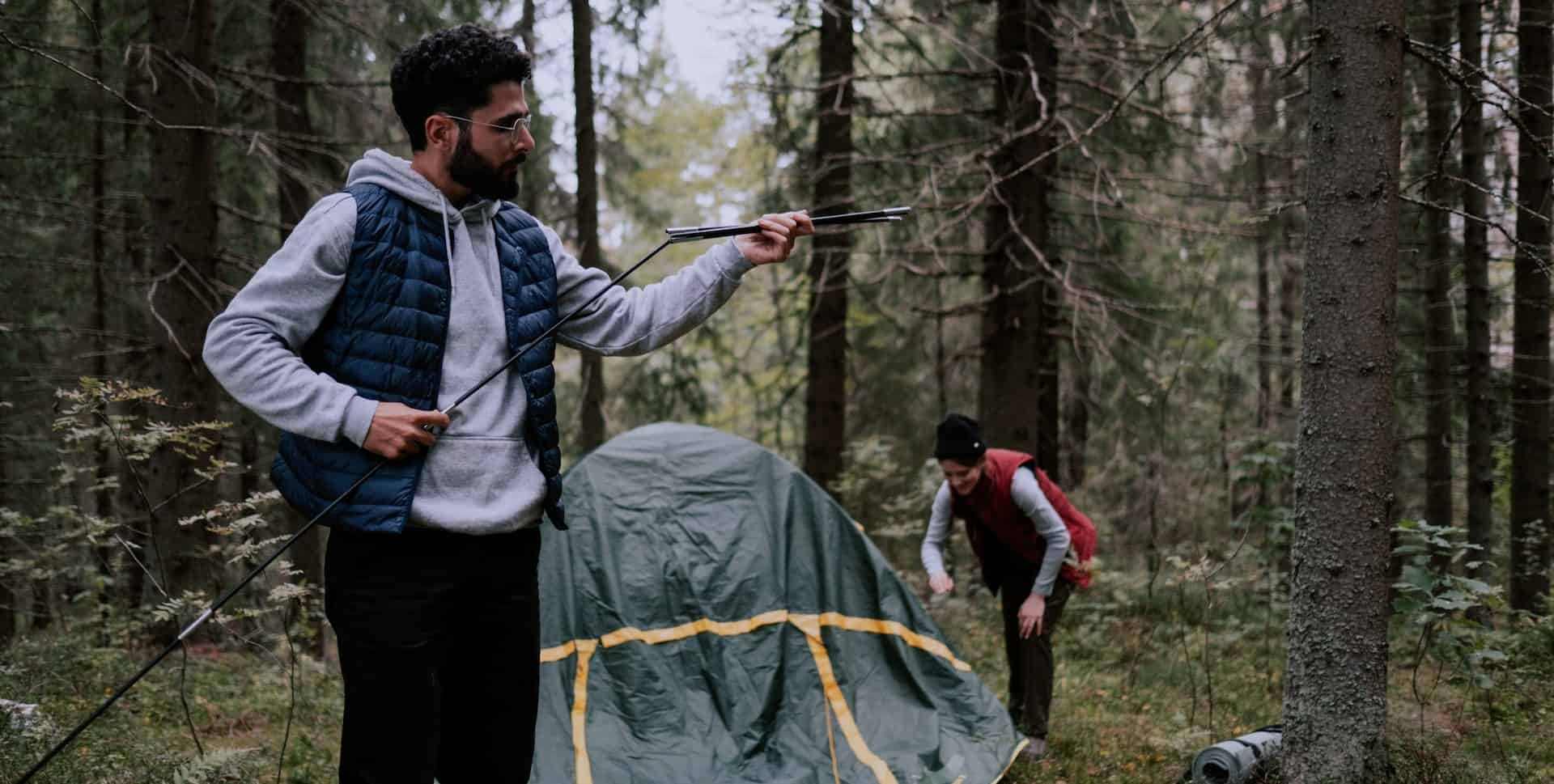While you’re in the wilderness, your tent serves as your home. It shields you from the weather and ensures seclusion from people around you. Most people go camping but are unaware of the construction of a tent. A tent has many parts, each intended for a specific purpose. What are all the parts of a tent, and what is each part used for?
The parts of a tent include the tent body, vents, tent poles, a rainfly, vestibules, bug netting/mesh, groundsheets, tent pegs (stakes), guy lines, tie out points, storage pockets (gear lofts), tent footprints, etc. Each part plays an equally important part in the construction of your tent.
Not every tent is constructed the same; some are created to adhere to a budget, whereas others can withstand the worst weather. This article will discuss a tent’s parts, including tent bodies, tent poles, guy lines, stakes, etc., and their functions.
Want to find out about the different parts of a tent? Read on!
What Are The Different Tent Parts?
Knowing all the different tent parts is important to prevent any surprises upon your arrival at camp. The best thing is to make a checklist to ensure that you have packed everything and will have a fully functioning tent. The parts of a tent include;
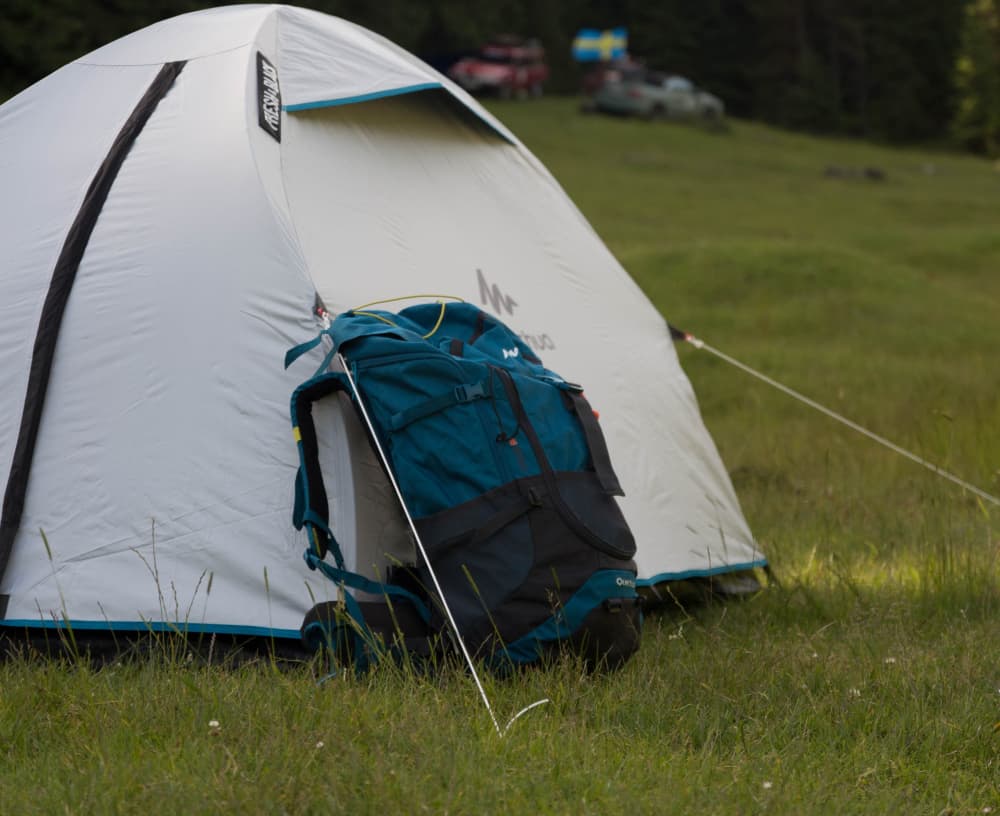
Tent Body & Materials
The tent body is often referred to as the “outer tent” since it has the floor, insect netting, or a cloth top that may be ventilated. To be more specific, if you own a single-wall tent, the cloth (or breathable material) makes up the entire body of the tent.
The tent body can consist of various materials. Look at some of the best tent fabrics and materials to find out which tent body will suit your tent requirements. The different tent fabrics include;
Nylon
Since it is lightweight, durable, and simple to make watertight, nylon is the fabric with which tents are most frequently made. Additionally, if your tent is nylon, it will dry up much quicker.
Nylon tents are made from nylon fibers woven into the material in a ripstop pattern. To make nylon watertight, manufacturers treat it with polyurethane or silicone. Nylon is also the most common material used for making backpacking backpacks.
Dyneema Composite
Dyneema composite fabric (originally called Cuben fiber) is the latest material alternative, and instead of being woven, the fabric is laminated. For its weight, Dyneema is fifteen times more robust than steel.
To produce a material that is both tear and pierce resistant and substantially lighter than nylon, Dyneema fibers are layered in between two polyester layers. This enables manufacturers to produce 2-person tents weighing less than 2 pounds.
Canvas
Canvas is made of thick fibers, such as cotton, and although not watertight, you can effectively waterproof canvas by coating it with linseed or wax oil. Although canvas is incredibly tough and ideal for heavy-duty purposes like hot tents or camping, it is too hefty to be used for backpacking.
Vents
Most tent designs incorporate vents at the top of the rain cover to enable rainwater to escape from the bed. When the inner tent and rain fly are kept dry, less condensation will build up inside them. In addition, it also provides wind shelter.
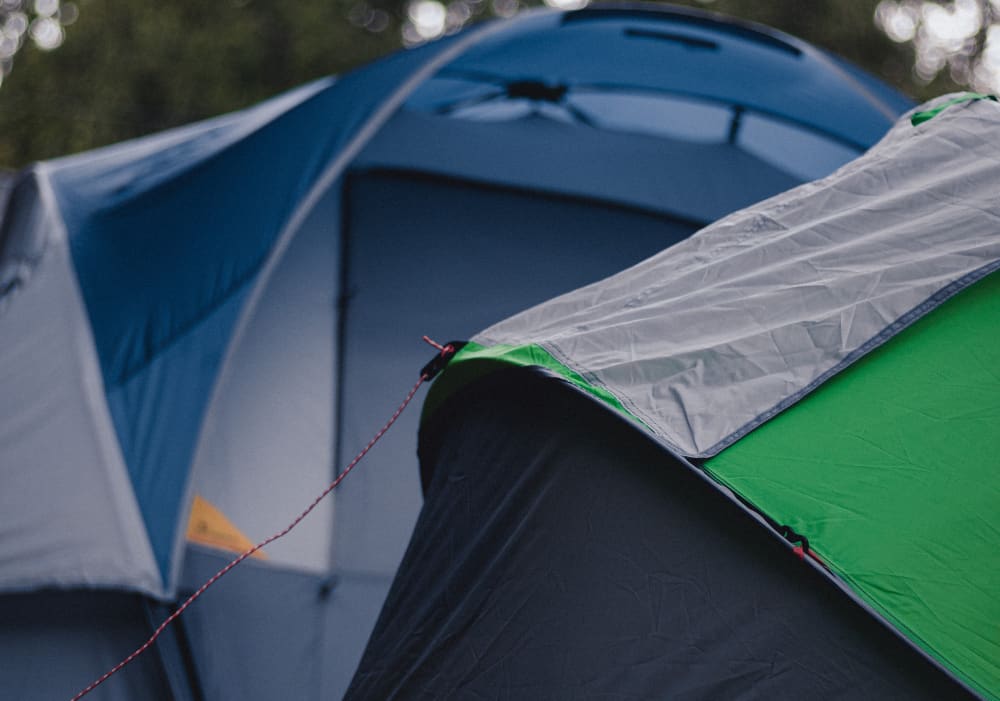
Tent Poles
Tent poles provide structural support (framework). Various pieces to the traditional tent pole design need to be connected. However, most current poles are foldable, making them easier to transport and store. The different primary components of a semi-rigid, inflatable, or stiff tent pole include;
- Center pole
- Side poles
- Center pole pin
- Side pole pin
- Tensioner
Tents are categorized into several varieties based on their poles. So, how do you know the best pole materials? Tent poles are made from the following materials;
- Aluminum Alloy: Frequently used in pole construction because it is lightweight and extremely durable. They are quite pricey and can be twisted to contours like GRP. Backpackers prefer this material to ensure they are prepared for any weather conditions.
- GRP (Glass reinforced plastic): GRP (also called fiberglass) is one of the most frequent and well-liked tent pole materials. It is affordable and simple to bend to fit the contours of your tent. Resin and glass support are mixed to create GRP. Small or larger tunnel, pop-up, or dome tents usually use GRP tent poles.
- Carbon Fiber: Carbon fiber tent poles are extremely robust and lightweight, making them ideal for curved constructions. However, their superior quality is a bit costlier than other tent pole materials.
- Steel Poles: Framed or square tents work well with steel poles. They’re often coated or painted to avoid corrosion. You will usually see steel tent poles in massive tent structures. However, steel poles do not revert to their original state after bending.
Tent Pole Clips & Sleeves
Depending on the model, you can attach the tent’s outer body to the poles with clips or sleeves. Using this, you can separate the cloth on the outside tent and the inside one.
Many new 3-season tents have clips, which are easier to use. As a result, many winter and mountaineering camping tents still require pole sleeves because they provide additional strength and durability to handle hectic weather.
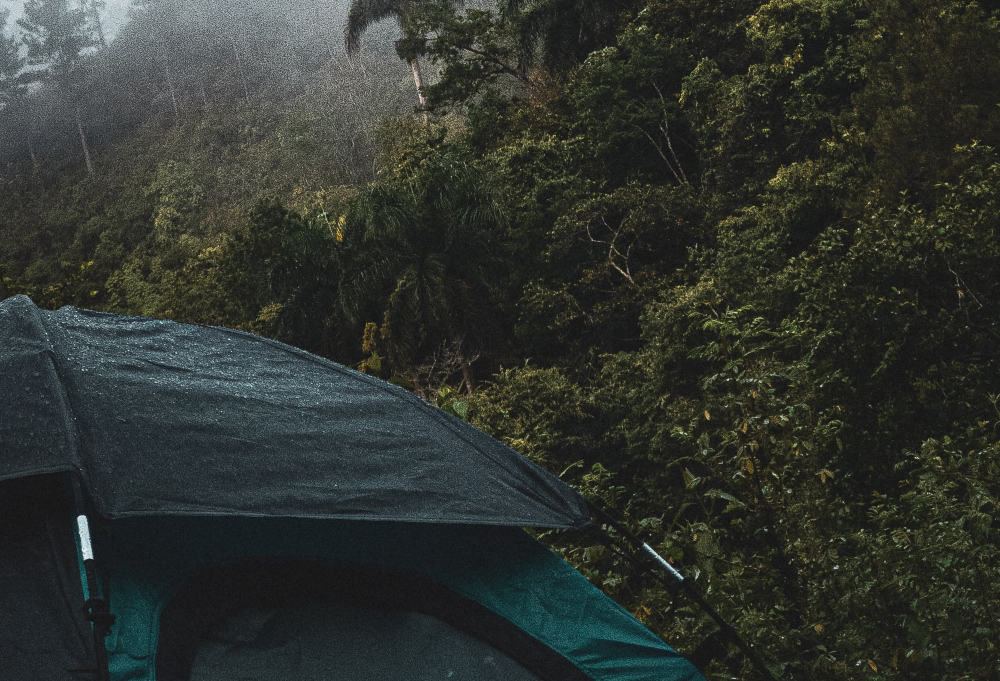
Rain Fly
A rain fly is a waterproof, custom-fitted cover for the tent and plays a crucial role among the tent’s components. The rain fly allows the water to flow down the tent’s exterior.
Several also include attachment points for guy lines that you can peg into the ground to secure the tent during strong winds and shield the inside of the tent. If you enjoy stargazing, purchase a tent with a rain fly that you can open to admire the night sky.
Tent Walls
There are two types of tents; single-wall and double-wall tents. The rain fly distinguishes a double-wall tent from a single-wall tent. Single-wall tents only have one fabric covering, which offers protection from the weather.
Typically, a double-walled tent features a mesh layer inside the tent and a rain fly that provides additional protection against harsh weather conditions. The advantages of single-walled tents are portability and affordability as they come with fewer parts than double-walled tents.
A single-wall tent’s ventilation might be inadequate, allowing moisture to accumulate. A double-walled tent’s principal advantage is to prevent moisture build-up. (Modern double-walled tents have reduced the weight of the extra textiles by employing lightweight materials).
Vestibules
A vestibule is like your tent’s “front porch.” With a cover extending further than the tent, a vestibule will protect you from the rain while you sleep in your tent or allows you to keep the tent “door” open to watch and enjoy the rain without getting soaked.
Bug Netting/Mesh
One of the most important functions of a tent is to keep you from being bitten by insects. Most three-season tents use insect netting (mesh) for the upper part of the tent’s exterior. When you’re inside the tent, you’ll be able to breathe easier and avoid being bitten by mosquitos and other bugs.
Groundsheets
Groundsheets come with a tent; however, there are high-quality ones that you can purchase individually. Even though it’s the only item separating you from the actual ground, a proper ground cover is important.
If a ground sheet is ripped or punctured, it would be best to replace it or, if possible, repair it. Some experienced campers even lay a second ground sheet underneath their tents to keep them clean. To save time, you can also use a polythene sheet but be careful not to let any part of it hang out while wet.
You can cover your floor with a camping mat to keep it safe from tearing. You should consider purchasing a tent bathtub floor to prevent groundwater from entering the bottom of your tent and wetting or ruining your gear and belongings.
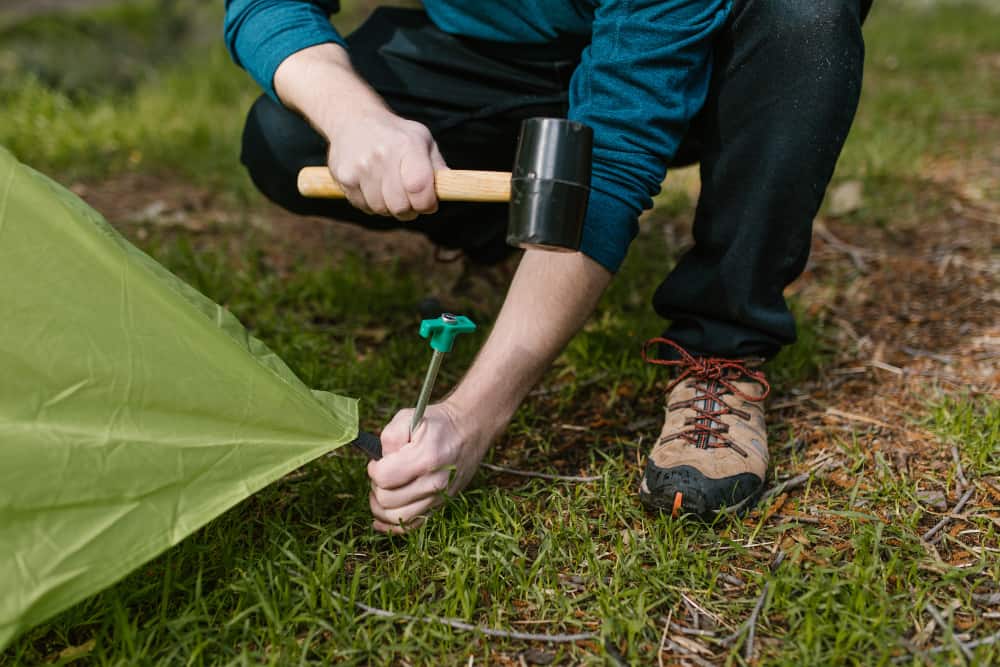
Tent Pegs (Stakes)
Most inexperienced campers don’t give tent pegs a second thought, yet they are essential in severe weather conditions and challenging terrain. The last thing you’ll want to experience on your camping trip is to be airlifted in the middle of a violent storm because you haven’t secured your tent to the ground properly.
Experienced campers believe that the bigger the tent peg, the better they will keep you secured to the ground. There are different types of tent pegs;
- Plastic Pegs: These work alright; however, they are flimsy.
- Steel Pegs: A steel peg is durable and performs much better than plastic.
- Titanium Pegs: Although very strong, titanium pegs are lightweight and are not produced in sizes big enough to secure your tent 100%.
- Screw Pegs: These pegs may take a bit longer to install, but they are the most effective, especially when caught in a ferocious storm! Screw pegs are best suited for softer ground.
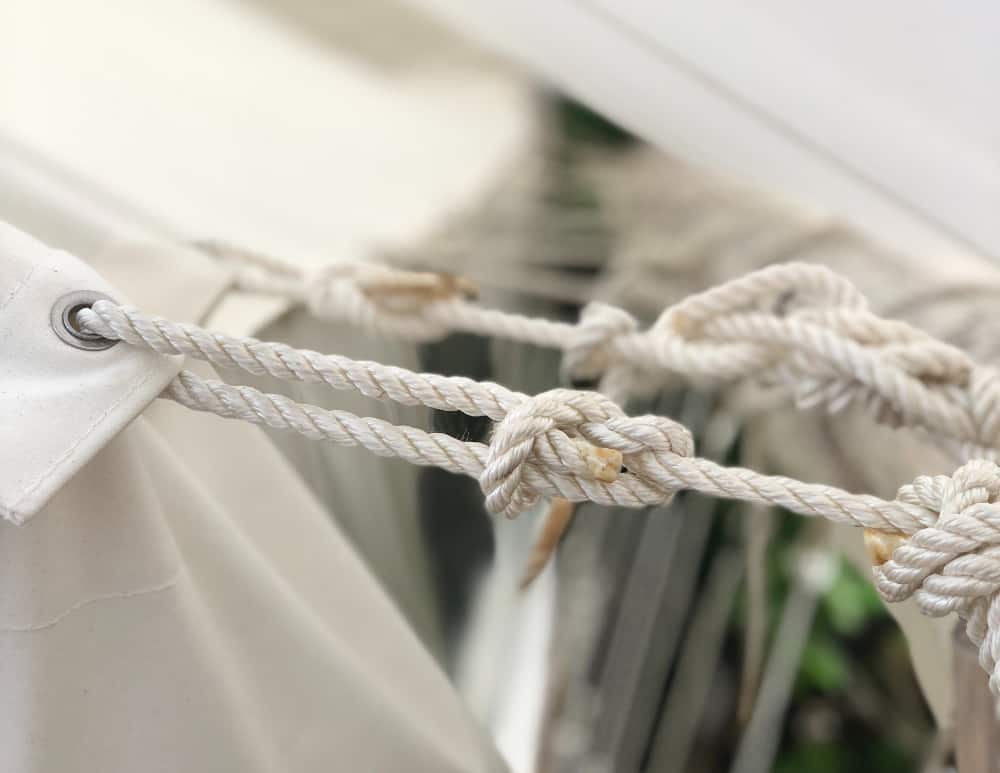
Guy Lines
Each contemporary tent comes with guy lines (also known as guy ropes), which have the advantage of being stretched to a defined extent and not contracting or becoming loose when wet or exposed to the sunlight.
Typically, guy lines use a ring-based connection to fasten to the exterior tent layer or flysheet. If you are unfamiliar with guy lines, this is how to use guy lines to set up a tent.
While buying a tent, look for one fitted with a metal ring with a rubber shock absorber. For ultimate stability, ensure the guy lines parallel the tent’s seams while setting up your tent with guy lines. After establishing a secure location, move the sliders as required to maintain tight support for the tent.
Tie Out Points
Tie out points are typically situated on a rain fly and allow you to attach the guy lines to bolster the structural integrity of your tent’s exterior layer. These tent components are essential to the construction as a whole.
Gear Loft
A gear loft is a compartment in a tent that offers space for storing small objects. It is a compact nylon mesh surface often suspended from the tent’s ceiling. Many people refer to gear lofts as tent storage pockets. These are usually used to store car keys, glasses, bug repellent, etc.
Tent Footprints
Tent footprints are merely a protective layer between the ground and the tent floor, commonly referred to as groundsheets or ground cloths. They are available in different materials and sizes. Tent footprints are designed to prevent abrasion underneath your tent.
Walking inside a tent generates great friction with the soil, rocks, snow, wood, or another camping surface. This friction could damage the waterproof layers, develop holes, and shorten the lifespan of your tent.
Even though they are helpful, do you really need a tent footprint? There is no compulsory requirement for a tent footprint; however, having a barrier between the ground and your tent may bring many benefits and prolong your tent’s life.
Common alternatives include a tarp (which you can also use to cover your tent for extra protection from rain). The most critical factor is pitching your tent on a surface with sufficient drainage that will not pool water. You’ll need protection on rough surfaces such as rock, mud, snow, or sand.
Leg Weights & Sandbags
There’s no better solution to secure a tent than by using weights and sandbags, as any experienced (or inexperienced) camper will assure you. Numerous tents are designed expressly for weights, including compartments in the tent’s legs to accommodate them.
Leg weights and sandbags are very effective in making your tent solid and secure, even more so when combined with a strong pair of guy ropes.
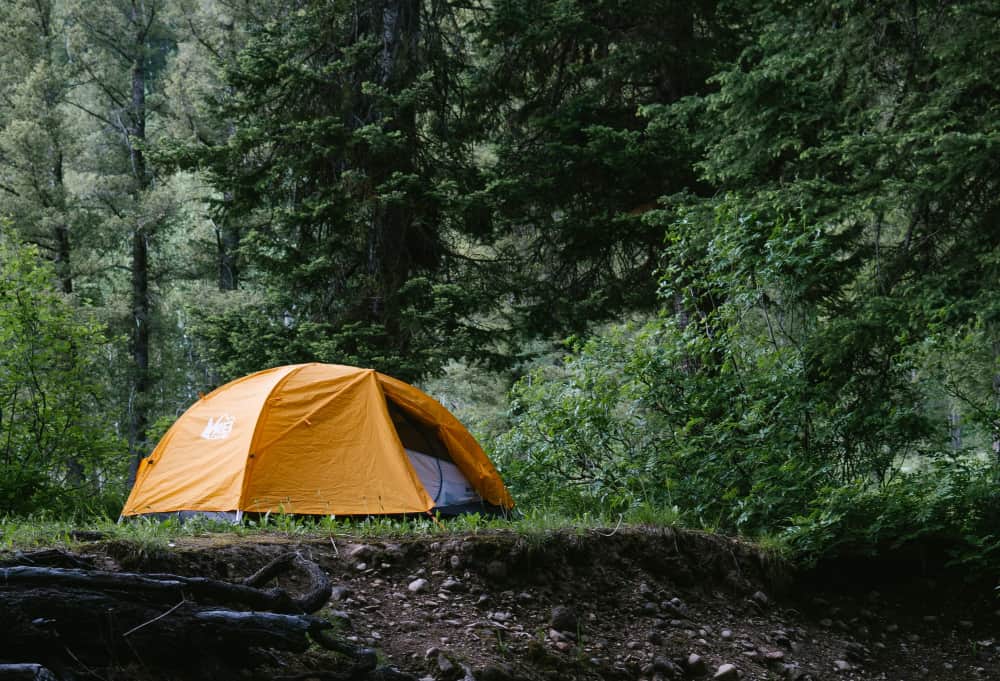
Additional Tent Parts & Accessories
The following tent parts and accessories will make your camping experience more convenient;
E-Port
An e-port is a feature that provides electrical access. An e-port allows you to bring your extension cord to camp and keeps it safe from the elements. You may plug in equipment like an iPad, phone charger, or a tent light without worrying about them becoming wet.
E-ports are frequently composed of PVC or other sturdy materials. You can cover them with the included flap to protect them from moisture when you are not using it. Certain tents have several e-ports to support various technological devices.
Nowadays, most campers bring smartphones and other technology on their vacations; therefore, tent e-ports have become extremely popular. As a result, several main tent producers are now selling versions equipped with e-ports as part of a tent’s standard equipment.
Large Portable Canopy
A huge, portable canopy is magical for expanding your campground. If you ever bring one to camp, pack additional weights and pegs. A canopy (gazebo) will make your temporary residence feel much larger and way more comfortable.
Mesh Screens
Using mesh screens to partition a large tent is also a wonderful option to expand and improve your camping area. You can even use these screens to partition off a portion of the campsite behind a gazebo or tarp.
